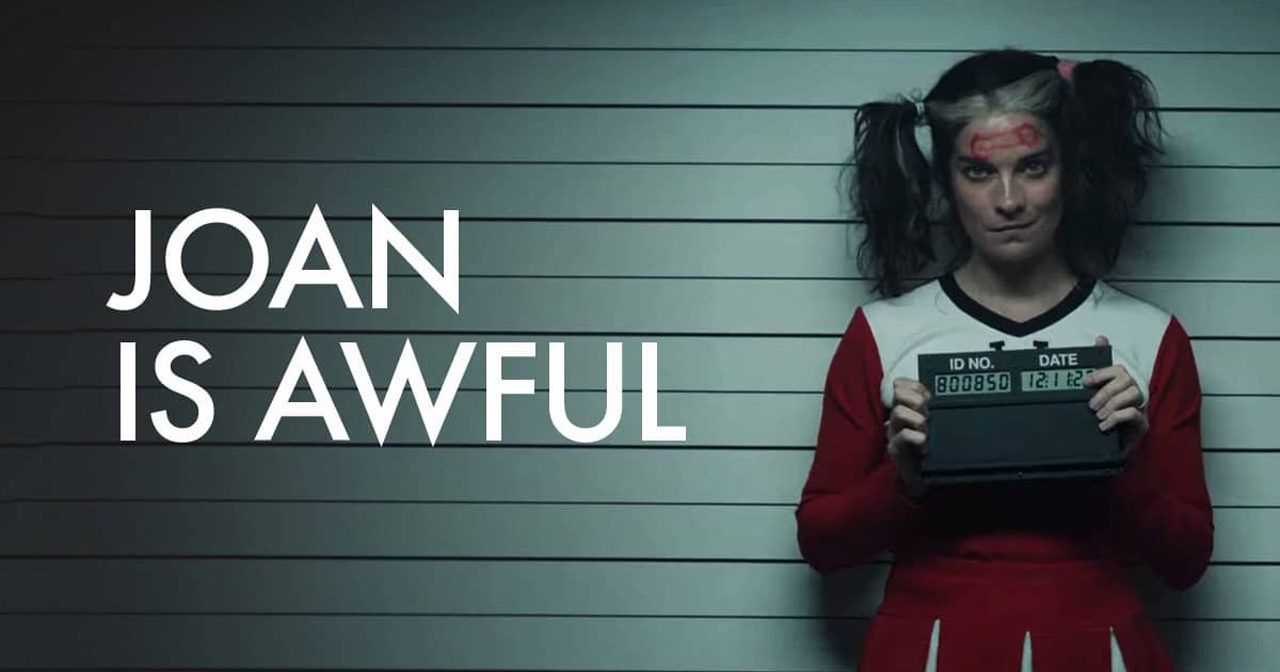SPOILERS AHEAD (obviously)…
Black Mirror, a multi-genre anthology series that explores dystopian near-futures through fictional technological advances, is well-known for its unique storylines, shocking plot twists, and disturbing nature. Each episode is an individual story that fits into a universe connected through easter eggs, characters, and events. Created by Charlie Brooker, the series is inspired by The Twilight Zone and explores themes of media and technology to create a world of horror and brutality.
“Joan Is Awful” is the first episode of the anthology’s sixth season. Starring Annie Murphy, Salma Hayek, and Michael Cera, the episode explores a world in which deepfake technology is used to exploit the most shameful and embarrassing pieces of one’s life for the profit of a streaming service. Harnessing references to several other episodes within the anthology, symbolism within the narrative itself, and messages about media consumption in the world today, “Joan Is Awful” has many easter eggs to be found and interpreted.
References Within the Universe
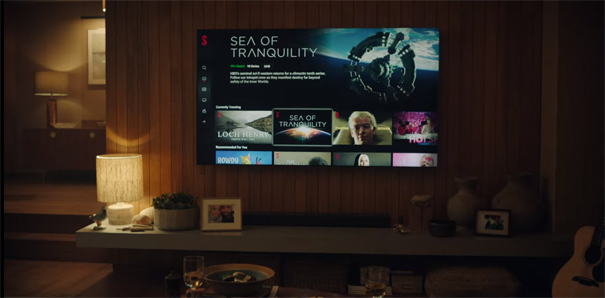
Streamberry is the streaming service that is the root of all problems faced within this episode of Black Mirror. This is the platform where Joan discovers the series, “Joan Is Awful,” which she discovers is simply a play-by-play of her daily life dramatized to make her out as an antagonistic character. Although Streamberry has never been featured in the Black Mirror universe prior to this episode, many references to elements of the world can be found within the platform.
When Joan opens Streamberry to enjoy a relaxing night of television with her fiancé, she begins scrolling through programs. Two that she references aloud are “Sea of Tranquility,” a science fiction television series and the most frequent reference in Black Mirror, and “Loch Henry,” which is the episode directly following “Joan Is Awful.” However, when examined closely, other references can be spotted such as “Mad Mind: The Jerome F. Davies Story,” a documentary on Jerome F. Davies, the author whom inspired “Bandersnatch,” an interactive film within the Black Mirror universe. Another series featured on Streamberry is “Hot Shot,” a virtual talent show featured in the second episode of the first season. The list goes on, as every program shown onscreen is a reference to an element of this world.
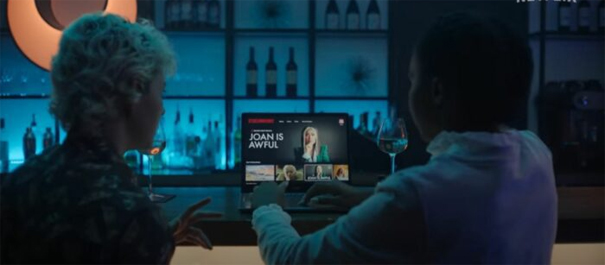
Once Joan has discovered “Joan Is Awful” on Streamberry, it is revealed that other characters in the episode are watching it as well, including Sandy, an intern at Joan’s company that she had fired earlier that day. When Sandy receives a message on her phone about the show, below it a notification from the “Smithereen” app can be spotted. This is a ride-share app similar to Uber that was introduced in the fifth season of Black Mirror. It makes another appearance when Mac, Joan’s ex-boyfriend whom she cheats on her fiancé with early in the episode, opens his phone to discover “Joan Is Awful.”
Later in the episode, Joan reads an article in the newspaper about Streamberry. This article pops up a few times throughout the episode, but to the left of the article a small headline can be seen that reads, “GRAINS GOING OUT OF STYLE.” This is a reference to the third episode of the first season of Black Mirror, in which memory grains record all memories to be stored in one’s head and even presented to others in the form of video footage.
When Joan’s life begins to fall apart due to “Joan Is Awful” ruining her reputation, her first idea is to take legal action against Streamberry. She visits Skillane Legal, which is a direct reference to Victoria Skillane, the protagonist of Black Mirror’s second episode of its second season, titled “White Bear.” This episode is also referenced as another program on Streamberry.
Foreshadowing the Inevitable
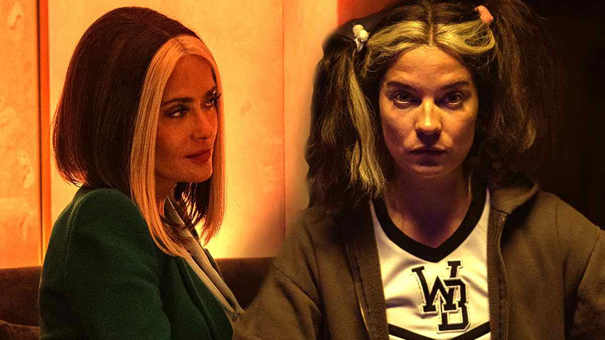
Like all Black Mirror episodes, “Joan Is Awful” has a mind-bending twist that leaves viewers attempting to decode the events at play. It is revealed late in the episode that Joan, played by actress Annie Murphy, is not the real version of herself. Beppe, a character played by Michael Cera, explains this to Joan and Salma Hayek when they break into the Streamberry headquarters to destroy their quamputer. Beppe tells Joan that Annie Murphy licensed her face to Joan for the television show that these characters are all currently living inside, just as Michael Cera licensed his. He refers to this universe as fictive level one.
Though Salma Hayek plays herself on fictive level one, fictive level two has her playing Joan and Cate Blanchett playing herself, and on fictive level three Cate Blanchett plays Joan, and so on. However, a woman he refers to as “Source Joan” is the true inspiration behind all of these timelines. As shocking and mind-boggling as all this is, there are hints and clues throughout the episode that point to this conclusion.
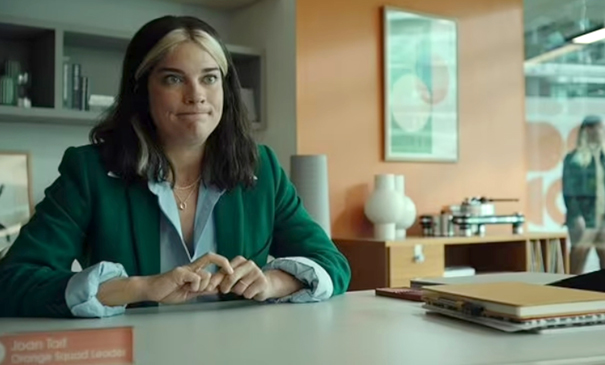
Circles play a large role in “Joan Is Awful.” At the beginning of the episode Joan wakes up and begins her morning routine. Circles can be found all over her home, including a wall mirror behind her when she sits up in her bed, multiple objects near her headboard, the overhead lamps in her kitchen as well as several objects across the counter. She then drives to work and more circles can be found all over the building. The lanterns are circular, there are circles within the wallpaper, a painting in Joan’s office features two circles, and circular vases can be spotted behind her in her office as well.
The quamputer within the Streamberry headquarters resembles a stack of circles. This likely represents the different fictive levels of the same storyline. Circles are also commonly used to symbolize infinity. The phenomenon of building on Joan’s singular timeline and exaggerating it in a more negative light each time has the possibility to be infinite, and that seems to be Streamberry’s plan for “Joan Is Awful.” The episode utilizes the repeated visual of a circle to foreshadow this phenomenon.
Upon leaving work, the next stop Joan makes during her day is therapy. During her session, Joan confides in her therapist about her lack of control over her life. She says she feels like she “never actively chose this” and that she is on “autopilot.” To really hit the nail on the head, she says, “I feel like I’m not the main character in my own life story.” Well, that’s because she’s not. She is in fact just a CGI creation mimicking Source Joan’s life for the sake of “Joan Is Awful,” but she doesn’t know that yet.
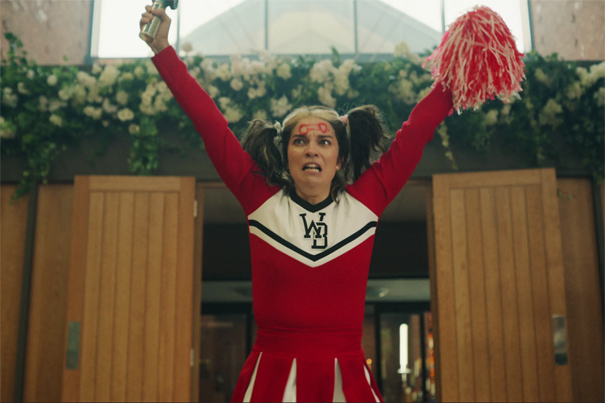
After Joan eats an unfathomable amount of fast food burgers, takes laxatives, brands her forehead with a phallic lipstick doodle, and storms into a church in a cheerleading outfit, defecating inside during a wedding ceremony in an attempt to anger Salma Hayek and encourage her to try and stop Streamberry from showing “Joan Is Awful,” the renowned actress does just that. She tries to confront the streaming corporation but to no avail, which leads her to confront Joan herself. In the midst of their conversation, Joan asks Salma Hayek, “how do you think Cate Blanchett feels about all this?” As Joan watches “Joan Is Awful” she hears Salma Hayek, who is playing Joan, threaten to sue Cate Blanchett for licensing her face to play her, just as Joan did in her timeline, referencing Salma Hayek. Little do these two know that the Cate Blanchett referenced on the show is simply computer-generated imagery, and the real Cate Blanchett remains blissfully unaware this limitless multiverse.
Another foreshadow is Joan’s day in and of itself. Joan is depicted as a heartless, conniving, and obnoxious person through her commentary and actions. It’s a setup to make her seem like a highly unlikable character. It is later revealed that she is purposely portrayed in a poor light because it drives viewership. Therefore, it makes sense that Joan seems like a terrible person to begin with, because the Joan that the audience first sees is the Joan on fictive level one, not Source Joan, who is presumably less awful, or perhaps not really awful at all, just lost.
Holding a Mirror to Our World’s Media

Black Mirror is known forits commentary on modern technology and our current standing as a society, utilizing it to create a near-future based on the potential trajectory of the present. There are multiple clear cut and direct references to our world in “Joan Is Awful,” and, like any Black Mirror episode, one of the most horrifying yet compelling aspects of this narrative is that it is so firmly rooted in reality. Its major themes as well as its more underlying and hidden messages hit very close to home.
Streamberry is the main antagonist in “Joan Is Awful,” which makes the choice to have the fabricated streaming platform so closely resemble Netflix bold and perplexing. The first few seconds of the episode feature the title appearing onscreen in way that is clearly reminiscent of the font and style of Netflix. Later in the episode, when Joan and Krish sit down to watch television, Joan opens Streamberry. The application, again, very closely and intentionally resembles Netflix. A red S appears onscreen while the application loads, reminiscent of the red N that appears while Netflix opens. Even the music that plays as Streamberry opens is the exact tune of Netflix’s opening. Further, when Streamberry opens and Joan begins scrolling through programs, the format of the application is almost identical to that of Netflix. It is abundantly clear that Streamberry is meant to be the Netflix of the Black Mirror universe.
Netflix hosts Black Mirror, so if the minds behind the series wanted Streamberry to reflect a real-life streaming service, it stands to reason that it had to be Netflix rather than Hulu or Max or any other platform. However, the choice to have Streamberry reflect a real-life platform at all is a brave one, as it painted streaming services like Netflix in such a negative light. Netflix essentially highlighted the biggest issues in the media through satire in this Black Mirror episode, which could be interpreted as the platform taking full accountability for its flaws. By painting itself in a negative light in the episode, Netflix might actually build up their reputation by owning up to the faults of modern media, something that other platforms never seem to do.
When Joan goes to Skillane legal hoping to sue Streamberry, her lawyer delivers disappointing news that the streaming service is not violating any laws through the creation of “Joan Is Awful.” She explains that when Joan downloaded Streamberry and accepted their terms and conditions, she essentially signed away the rights to her privacy. This is most likely a commentary on the corruption of big companies including streaming services, highlighting the obscurity of their terms and conditions and the fact that nobody really reads them before agreeing.
Joan then asks her lawyer how the producers of “Joan Is Awful” know what she is doing at all times, since the events that happen in her life air on Streamberry very shortly afterward. Her lawyer gives an example of how someone may talk about shoe deodorizers with a friend while having their phone closeby and shortly after seeing a plethora of advertisements for the product. She relates this to Joan’s situation, implying that she is being watched through her phone. The shoe deodorizer conversation most likely sounds familiar to all of Black Mirror’s viewers, as it is a common conversation in our world that we receive targeted advertising constantly due to the fact that we are watched and tracked through our phones. It is very likely that this scene was a commentary on this phenomenon.
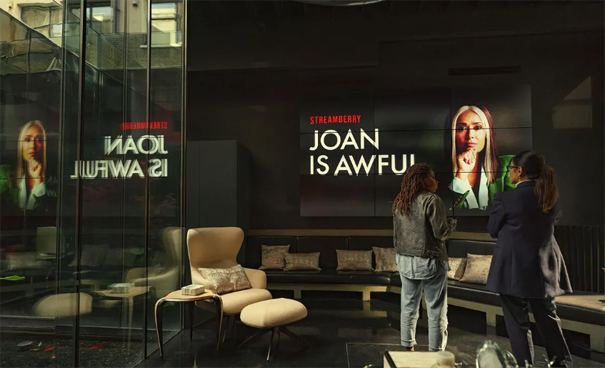
A clear contrast in “Joan Is Awful” is that at Joan’s work, showing emotions is looked down on and even banned, whereas Streamberry showcases it for its audience to consume. When Joan fires Sandy from Osonicle, she becomes upset and is escorted out of the building by Brutus. When Joan is fired later on, her assistant tells her to stay calm so she is not forced out as Sandy was. However, when these events are dramatized and showcased through “Joan Is Awful,” its audience laughs and watches intently. As for Joan, while she is not laughing or enjoying the series, she watches every bit of it and cannot look away no matter how upset it makes her. She is only focused on fixing her image.
It is revealed later in the episode that the negative title and overall mood of the series is meant to put the viewer whom it is based around in a “state of mesmerized horror.” This drives more viewership for Streamberry as these people cannot seem to tear themselves away from the negative perceptions of themselves being showcased. This clearly reflects modern media in our world, as it is very accessible and allows self-hatred and body dysmorphia to run rampant. Despite this common knowledge, the public still finds themselves addicted to the media, putting them in a similar state of mesmerized horror that is shown in this Black Mirror episode.
The overarching message of “Joan Is Awful” is that television is largely fake, and everything seen or heard in the media regarding oneself or others should be taken with a grain of salt. “Joan Is Awful” has several layers. Annie Murphy is a famous actress that plays Joan in one universe, but in another she is Joan and Salma Hayek is a famous actress playing her, and the pattern repeats. As the phenomenon continues, each version of the story is more dramatized, making Joan out to be worse and worse each time. This truly drives the point of how fake and convoluted the whole multiverse is. The media dramatizes and shifts people and events to create a more entertaining narrative. “Joan Is Awful” serves as a reminder to stay vigilant.

